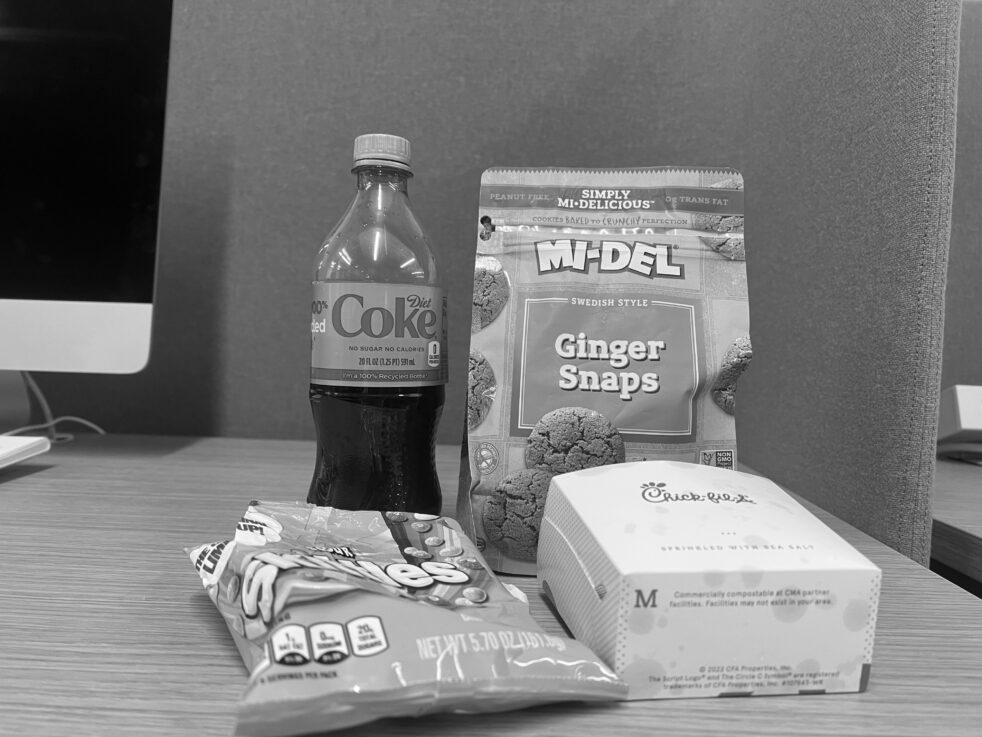If you interact with social media, you have undoubtedly heard the catchy jingle repeatedly singing “girl dinner.” However, even though the term can be found at nearly every corner of the internet, its meaning is difficult to define.
Olivia Maher, the self-proclaimed founder of “girl dinner,” refers to it as a dinner created by small portions of contrasting foods, such as bread and cheese, that could be likened to a medieval-peasant-inspired dinner. Other users of the term emphasize that the key tenet of girl dinner is its assorted and disarrayed nature of foods that together constitute a dinner for one person.
While “girl dinner” began as a humorous way to point out the often odd habits we default to when left alone for a meal, many users point out the trend’s connection to encouraging disordered eating. In response to videos of users’ girl dinners, X (formerly known as Twitter) user @steph_philo commented “‘girl dinner’ you have an eating disorder.”
This comment encapsulates a much larger surge of backlash against the trend — pointing out that a lot of these grazing plates that should represent a full meal are suspiciously low in calorie-count. Moreover, critics point out that posting content that encourages unhealthy eating habits under a trend that prominently features the word “girl” furthers the feminization of disordered eating habits.
Videos posted under the trend of “boy dinners,” a direct response to girl dinners, sees users consuming higher calorie meals, such as instant noodles or left-over pizza, just in the backdrop of a messy room. Girl dinner, on the other hand, places an emphasis on only the food that is consumed, seemingly connecting girlhood to eating habits.
This is by no means a new phenomenon. Ideas of girlhood and disordered eating have been deeply intertwined since the beginning of the internet. As early as 2001, Yahoo began removing pro-anorexia blogs, and Tumblr has laid host for swaths of “thinspiration” blogs since the early 2010s.
The content on these websites is still around. In November of last year, the New York Post published an article titled “Bye-bye booty: Heroin chic is back” where “heroin chic” refers to the glorification of thin, malnourished-looking bodies which first became popular in the mid-1990s. This was prominently featured as the ideal body image in many of these aforementioned blogs.
Supporters of girl dinner, on the other hand, argue that girl dinner encourages intuitive eating and allows people to separate the stress of needing to cook and meal-prep from the simple joys and pleasure of eating. In an interview with the New York Times, art historian Seema Rao argues that “the idea of cooking dinner was historically women’s work in the home. What I like about girl dinner is it takes away the idea that you have to cook anything,” which consequently works to address gender norms about the relationships between food and gender.
Depending on where you look on the internet, you will find a drastically different opinion on whether girl dinner is a meaningful contribution to the internet or yet another trend equating eating habits to a person’s entire life.
Regardless of which side you fall on, it is important to recognize the constant policing of women, their bodies and by association, their eating. Videos of women’s culinary snapshots almost always face immediate backlash.
There is nothing inherently wrong with wanting to share what you want to eat on the internet; eating and food are an integral part of all of our lives. There is nothing wrong with participating in the trend, but rather, the problem lies with its reception. There is something concerning with the culture formed by the internet surrounding girlhood and food.
